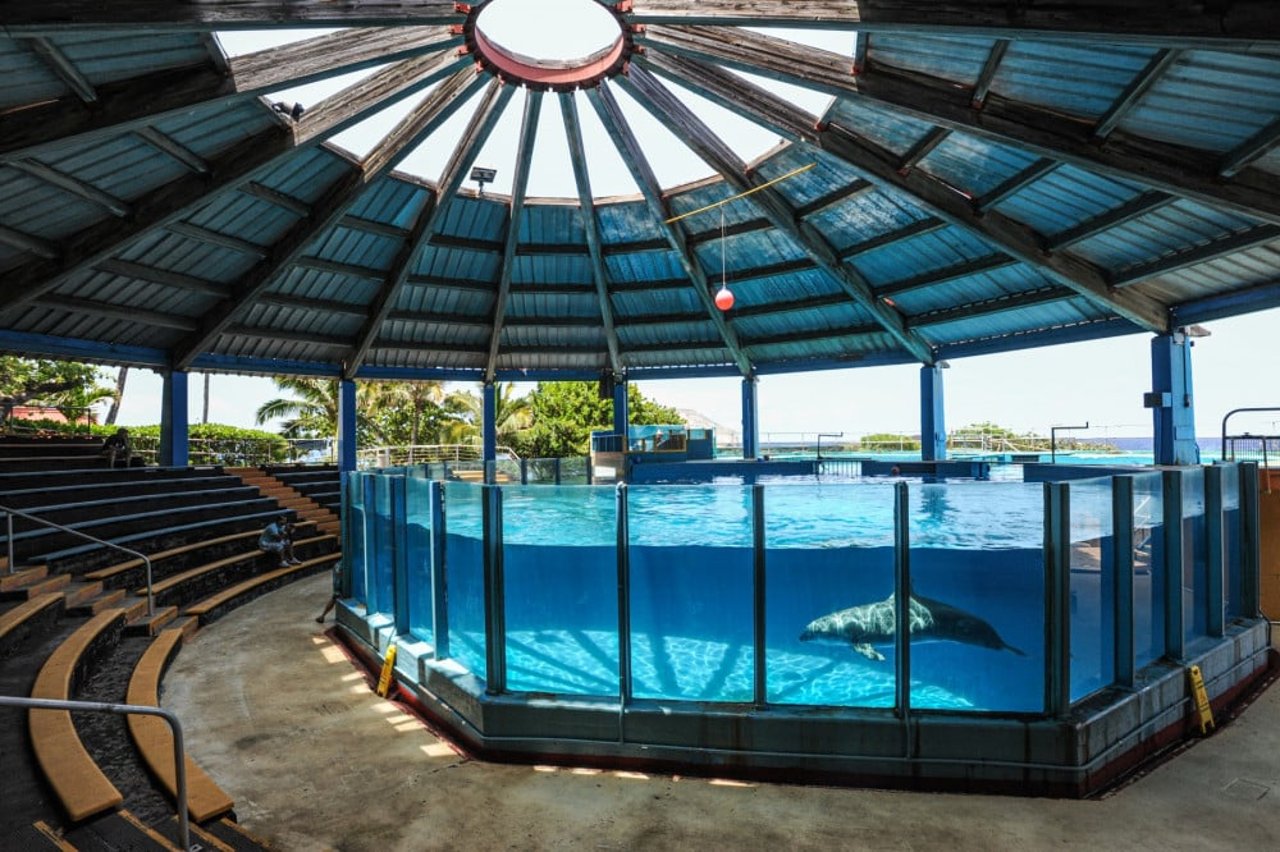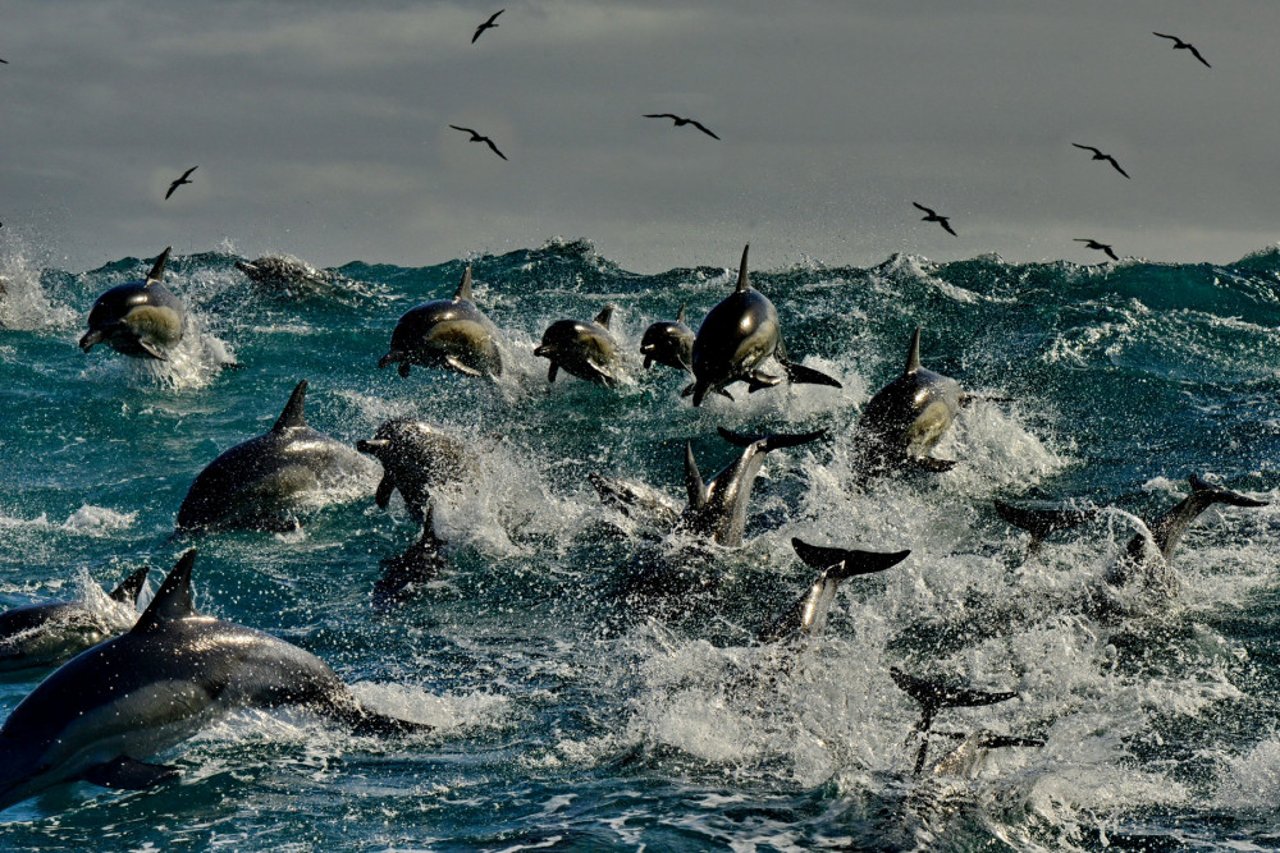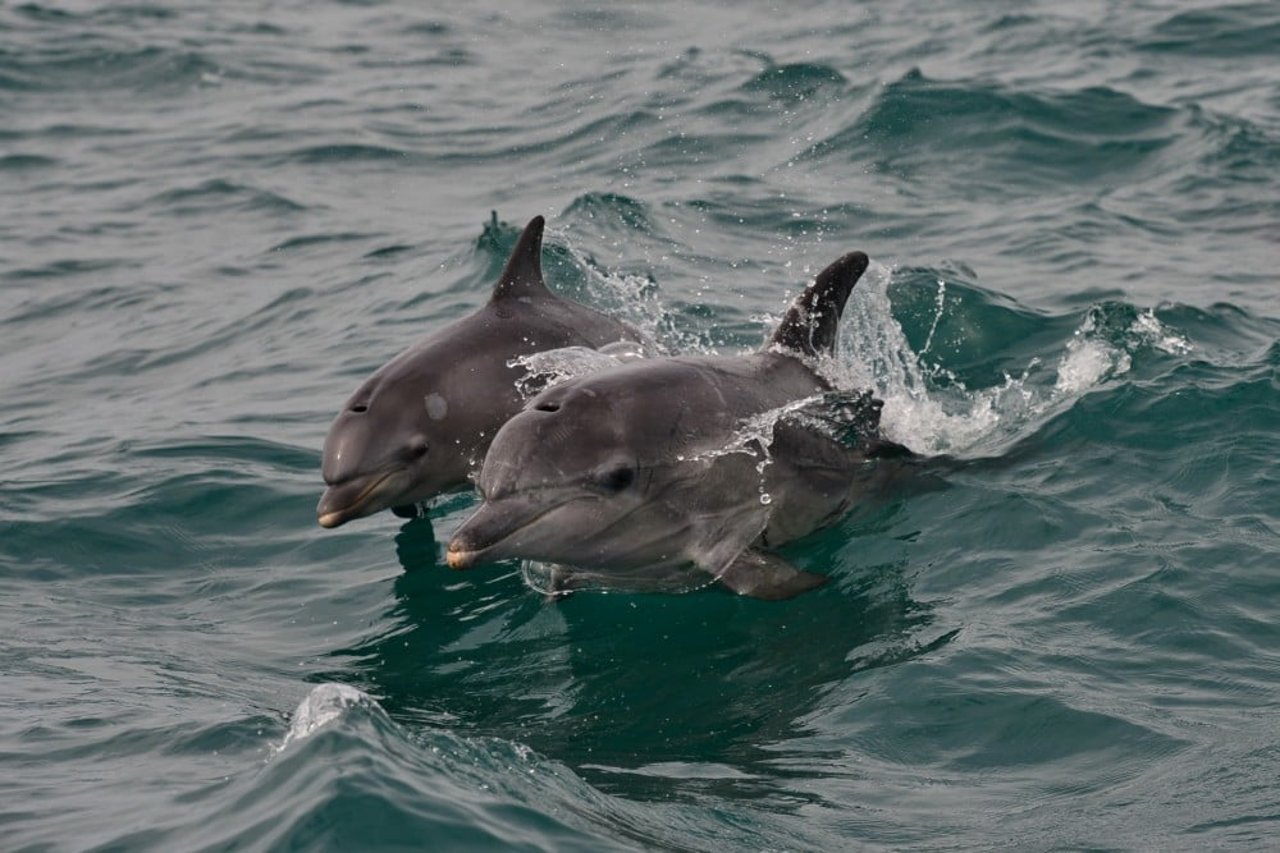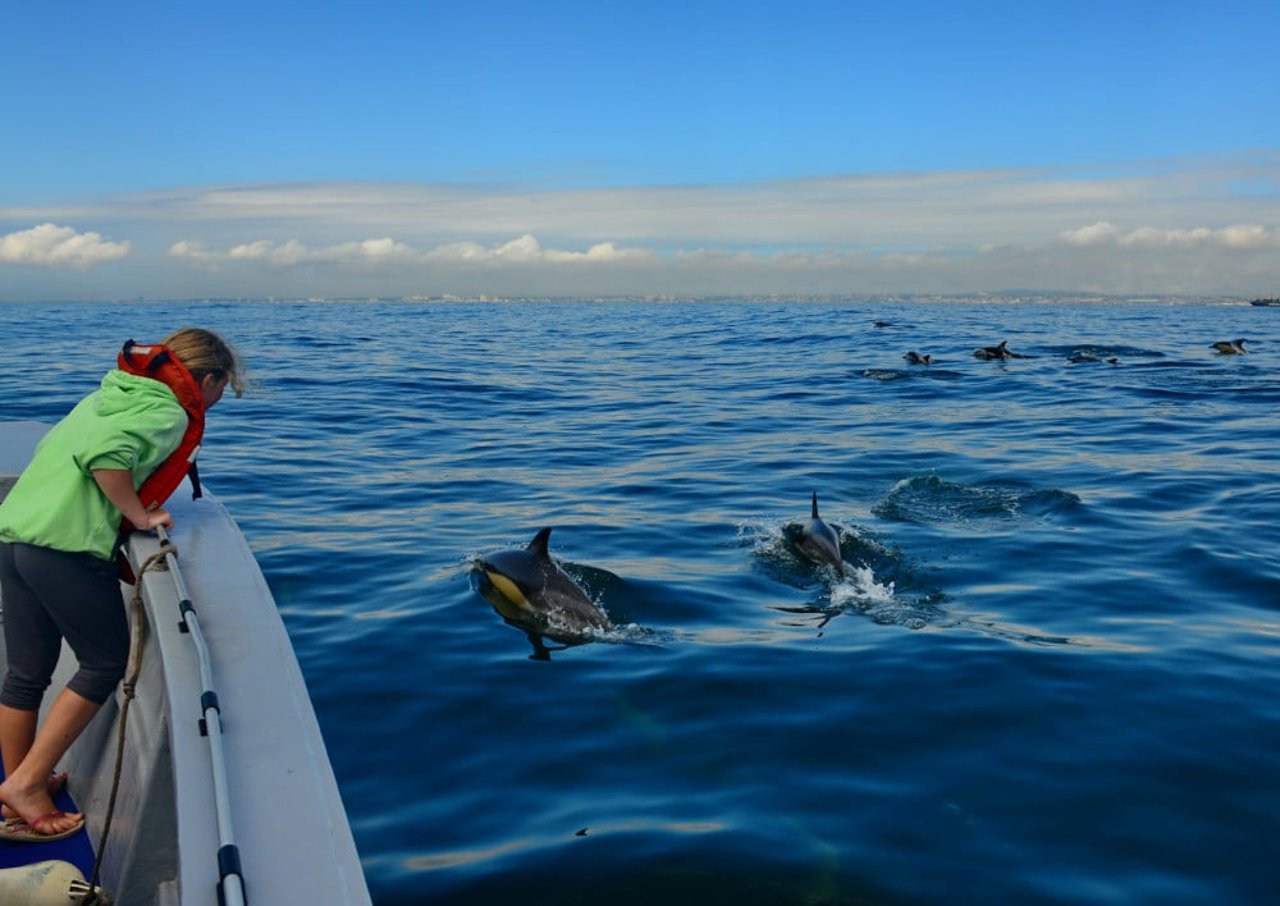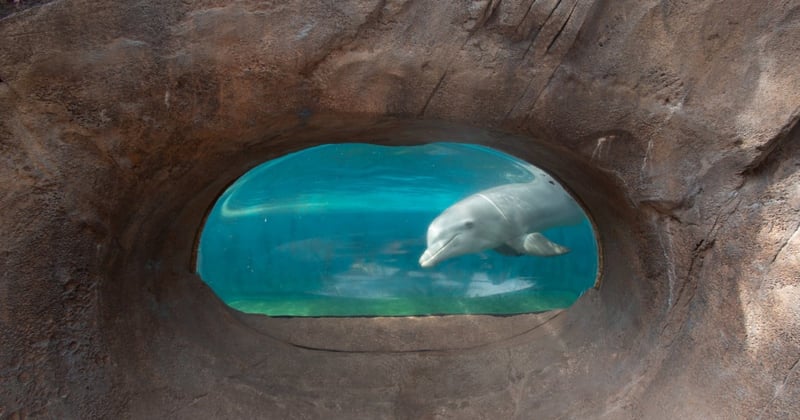
Dolphins are known for their joyful and playful nature, however, captive dolphins, despite their cheerful demeanour, are sadly not as happy as they appear.
Over 3,000 dolphins are held captive to support a multibillion-dollar dolphin tourism industry. Behind the seemingly cheerful smiles of captive dolphins lies a world of trauma.
Scientific evidence shows that dolphins are intelligent, sentient animals which means they can feel emotions like love and joy, but they also experience pain, fear, and suffering.
Bottlenose dolphins can live for over 40 years, so that's 40 years of misery in captivity. Let's join together to protect these intelligent beings and ensure they can live freely and happily where they belong.
Unveiling the facts of dolphin suffering
Having an intimate understanding of the immense suffering experienced by dolphins in captivity, let's delve into the hardships they endure:
- The standard tank in a dolphinarium is roughly 200,000 times smaller than the natural space that dolphins should be calling home. Designed so that the animals are always visible to humans, the tanks often offer no shade and very little mental stimulation.
- Captive dolphins used for tourism and entertainment are bred in captivity and separated from their mother from an early age. This is extremely traumatic for both the mother and the calf and inhibits natural learning.
- A captive environment is incredibly stressful for dolphins. The lack of stimulation as well as unusual groupings often result in aggression towards their tank mates as well as grinding their teeth, bobbing their heads and swimming in circles.
- Dolphin training methods include making them work or perform tricks for their food, which mainly consists of frozen fish.
- Dolphins kept in small pools or tanks can live for more than 40 years. That’s 40 years of pure misery, day in day out.
Understanding dolphins in their natural habitat
To comprehend the extent of dolphins' suffering in captivity, it is crucial to grasp their natural behaviour in the wild.
Stories about dolphins displaying empathy and helping others, even different species, are not mere fabrications. Extensive scientific evidence supports the notion that dolphins possess a broad spectrum of emotions, including empathy. Empathy and altruistic behaviour are considered advanced emotional abilities.
In their natural environment, dolphins encounter various experiences and opportunities that fulfil their emotional needs. However, captivity cannot adequately cater to these complex emotional requirements.
Dolphins employ a combination of sounds and body language for communication
Dolphins are known to communicate through a combination of body language and vocalisations, including unique sounds that serve as their individual identities.
Each dolphin possesses its own, distinct whistle enabling them to introduce themselves and share their feelings and emotions. Captive dolphins experience incredibly stressful and traumatising situations and live in horrific circumstances compared to their wild counterparts.
They are often exposed to very loud noises from loud music to cheering crowds, exacerbated by prolonged periods spent at the water’s surface with nowhere else to go.
Learning is a collaborative process among dolphins
Dolphins' remarkable intelligence makes them a top choice for captive entertainment, as they can grasp basic language through symbols and exhibit self-recognition in mirrors.
This high level of cognition makes them easily trainable to perform tricks that entertain humans. In their natural habitat, this intelligence aids dolphins in problem-solving, caring for their pod's welfare, and fuelling their innate curiosity.
However, for captive dolphins, their intelligence leads to increased frustration and suffering rather than fulfilling their natural instincts for exploration and social interactions. The stimulation provided in entertainment facilities is not proven to satisfy even a small percentage of their needs.
Dolphins form tight-knit communities
Dolphins are incredibly social animals that form communities with social roles within them. Any social being, and that is also including humans, needs the ability to effectively communicate with other members of the community.
Dolphins exhibit collaborative behaviours, working together to accomplish challenging tasks such as nurturing their offspring and herding shoals of fish.
However, the social needs of captive dolphins often go unmet, lacking opportunities for the essential levels of social interaction required for their well-being. Often, dolphins are also placed in unfamiliar groupings, which can lead to stress, aggression and even injury.
Whale Heritage Sites are the better choice for dolphin watching
After gaining insights into dolphins, responsible tourists cannot support visiting captive dolphin entertainment facilities. There are alternative ways to encounter them responsibly, in their natural habitat where they should be.
There are so many opportunities to encounter whales and dolphins responsibly all across the world, including in the UK. There is nothing better than seeing these wild animals in their natural environment. Always ensure that your whale-watching tour puts the whales and dolphins first and allows them to interact on their own terms and swim away when they want to.
At World Animal Protection we work in partnership with the World Cetacean Alliance to support their Whale Heritage Site programme. Whale Heritage Sites are areas recognised for being outstanding places to view whales and dolphins responsibly in the wild, and where local communities work together to protect and celebrate the marine mammals and their habitats.
TUI Group are one of the world's largest travel companies and they still profit from captive dolphin entertainment - tell them it's time to stop making money from animal cruelty by signing our petition.
Image credits: Second image by Jo-Anne McArthur / all other images by Raggy Charthers
